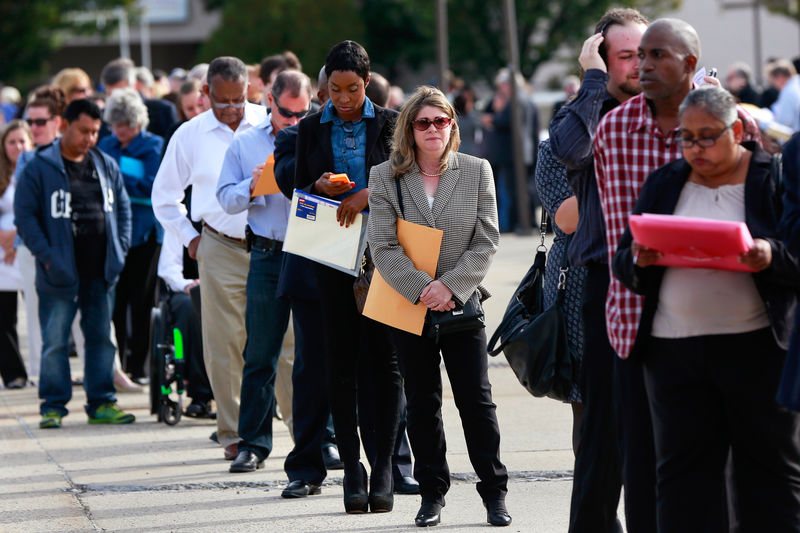By Lucia Mutikani
WASHINGTON (Reuters) - U.S. private employers boosted hiring in August, suggesting the economy continued to grow at a moderate pace despite trade tensions which have stoked financial market fears of a recession.
Labour market resilience was underscored by other data on Thursday showing a slight increase last week in the number of Americans filing applications for unemployment benefits. The year-long trade war between the United States and China is weighing on business investment and manufacturing, threatening the longest economic expansion in history.
That is expected to prompt the Federal Reserve to cut interest rates again this month. The U.S. central bank lowered borrowing costs in July, citing growing risks to the economy from the trade fight and slowing global growth.
Labour market strength is supporting the economy, now in its 11th year of expansion, through strong consumer spending.
"Extreme uncertainty over trade issues has soured the sentiment of some in the business community, but companies continue to hold on tight to the workers they have and are also onboarding new workers at a fast clip," said Chris Rupkey, chief economist at MUFG in New York. "This isn't what a recession is supposed to look like."
The ADP (NASDAQ:ADP) National Employment Report showed private payrolls increased by 195,000 jobs in August after rising by 142,000 in July. The ADP report, which is jointly developed with Moody's Analytics, came ahead of the release of the government's more comprehensive employment report on Friday.
The report, however, has a poor record forecasting the private payrolls component of the government's employment report because of differences in methodology. Given that August payrolls have a tendency to undershoot expectations, the strong ADP report is unlikely to change economists' forecasts.
According to a Reuters survey of economists, nonfarm payrolls probably increased by 159,000 jobs last month after rising by 164,000 in July. Job growth has slowed from an average of 223,000 per month in 2018.
But the pace of employment gains remains well above the roughly 100,000 jobs needed per month to keep up with growth in the working-age population. The unemployment rate is expected to have held at 3.7% in August for a third straight month.
U.S. stock index futures held gains after the release of the data on Thursday while the dollar (DXY) held at lower levels against a basket of currencies. Yields on U.S. Treasuries were trading higher.
In a separate report on Thursday, the Labor Department said initial claims for state unemployment benefits increased 1,000 to a seasonally adjusted 217,000 for the week ended Aug. 31.
Economists polled by Reuters had forecast claims would be unchanged at 215,000 in the latest week.
The four-week moving average of initial claims, considered a better measure of labour market trends as it irons out week-to-week volatility, rose 1,500 to 216,250 last week.
In another report on Thursday, the Labor Department said nonfarm productivity, which measures hourly output per worker, increased at an unrevised 2.3% annualised rate in the last quarter.
Productivity also rose at an unrevised 3.5% rate in the first quarter. Economists polled by Reuters had expected second-quarter productivity would be revised down to a 2.2% rate.

Manufacturing productivity fell at a 2.2% rate in the second quarter, instead of the 1.6% pace estimated last month. That was the weakest since the third quarter of 2017 and followed a 1.2% pace of increase in the first three months of the year.